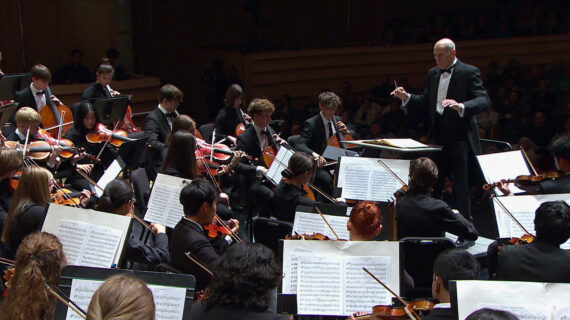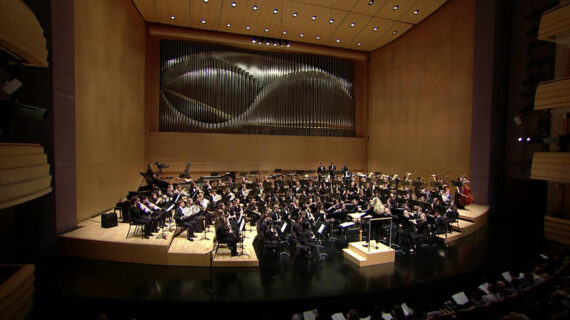Frederica Freyberg:
Taxes and the role of government are issues that put rural Americans at the center of the national conversation. The state legislature is talking about increasing funding for rural schools and increasing internet access. It was also the rural vote that is credited with propelling Donald Trump into the White House. In our ongoing partnership with WisContext this week we look at the influence of rural communities. Specifically how do you define rural here in Wisconsin. This week Malia Jones, an assistant scientist in the Applied Population Laboratory at the University of Wisconsin-Madison joins us. Thanks for being here.
Malia Jones:
Thanks for having me.
Frederica Freyberg:
Why did you set out to define rural?
Malia Jones:
Well, as you said it’s been the topic of national conversation. What’s happening in rural America and rural issues. And coming largely from an urban background I started to get curious about what we really meant by rural places. So I started looking at different ways to put rural Wisconsin on a map. And we came up with quite a few, actually, ways to define it.
Frederica Freyberg:
Well, what would you give us as the definition of rural?
Malia Jones:
So there are a number of different definitions that are out there. I think the one that many urban places think of is closely aligned with the census definition of urbanized places. It’s basically any place that has a developed land area is considered urban and then everything else is rural. But that includes a lot of the suburbs and even smaller cities that are really not truly rural places like others might think of them.
Frederica Freyberg:
Let's take a look at one of your maps. It is kind of showing this non-urban and urban. And describe for me what this map shows.
Malia Jones:
This is the map that comes from the Federal Office of Management and Budget definition of metropolitan and micropolitan areas. And this definition uses counties so they are whole counties. And they are either classified as metropolitan or micropolitan. Those are two city-size designations. And the — every county that doesn’t have a metro or microcenter is considered rural.
Frederica Freyberg:
I can’t count them up right here but how many counties are designated as rural in Wisconsin and maybe what percentage of the state?
Malia Jones:
So in Wisconsin it’s 32 counties are considered rural by this definition. And it is something like half of all the counties and around half of the landmass. But considerably fewer people, of course, because rural places are much less densely settled.
Frederica Freyberg:
That's a lot of rural space.
Malia Jones:
It is.
Frederica Freyberg:
What are the significant demographics of rural people?
Malia Jones:
So in Wisconsin, we see really strong patterns around age. And rural places tend to be older and also considerably less race and ethnically diverse than our urban places. And then in addition, of course, there are big differences in terms of economy as anyone who has ever been to a rural place would know. There are specific land uses like agriculture and forestry, mining and manufacturing that are really centered in our rural places.
Frederica Freyberg:
You take a look at something else and we have a map of that. It is the rural versus remote or frontier, which is really interesting to me. What is remote and frontier?
Malia Jones:
So this is another definition that was developed by the U.S. Department of Agriculture. And it is meant to identify places where residents would have a hard time accessing basic services and specialty services like auto repair, groceries, emergency health services, specialty health services. And so the definition is based on how far residents have to drive to get to some kind of town center or urban center where they could access those needed services. It is really about people who have poor transportation or low resources and are living in these remote areas and the kinds of resources they can get to.
Frederica Freyberg:
You have a really delightful map as well that has to do with the cow to person ratio. Is this a scientific measure or just one for Wisconsin?
Malia Jones:
When we were making all these maps we heard a number of people tell us that their county was rural based on the fact there were more cows than people. I actually went and got the data for the number of cows per county. And we came up with this map of the parts of Wisconsin where there are more cows than people which it turns out is a considerable part of the state as we might have guessed.
Frederica Freyberg:
How does Wisconsin compare to other states when it comes to percentage of parts of the state that are rural?
Malia Jones:
Wisconsin has a relatively large proportion of our population that is living in rural places. And also relatively large amount of land area. We’re also, I think, uniquely dependent — not uniquely but more dependent on rural economy than some other places. We don’t have the kind of major urban center that dominates the state the way some other nearby states do like Illinois and Minnesota. So it’s — we do have a big rural population and it is an important part of our state.
Frederica Freyberg:
Thanks for defining it in so many different ways. Malia Jones, thanks.
Malia Jones:
Thank you.
Search Episodes
Related Stories from PBS Wisconsin's Blog

Donate to sign up. Activate and sign in to Passport. It's that easy to help PBS Wisconsin serve your community through media that educates, inspires, and entertains.
Make your membership gift today
Only for new users: Activate Passport using your code or email address
Already a member?
Look up my account
Need some help? Go to FAQ or visit PBS Passport Help
Need help accessing PBS Wisconsin anywhere?

Online Access | Platform & Device Access | Cable or Satellite Access | Over-The-Air Access
Visit Access Guide
Need help accessing PBS Wisconsin anywhere?

Visit Our
Live TV Access Guide
Online AccessPlatform & Device Access
Cable or Satellite Access
Over-The-Air Access
Visit Access Guide
 Passport
Passport








Follow Us